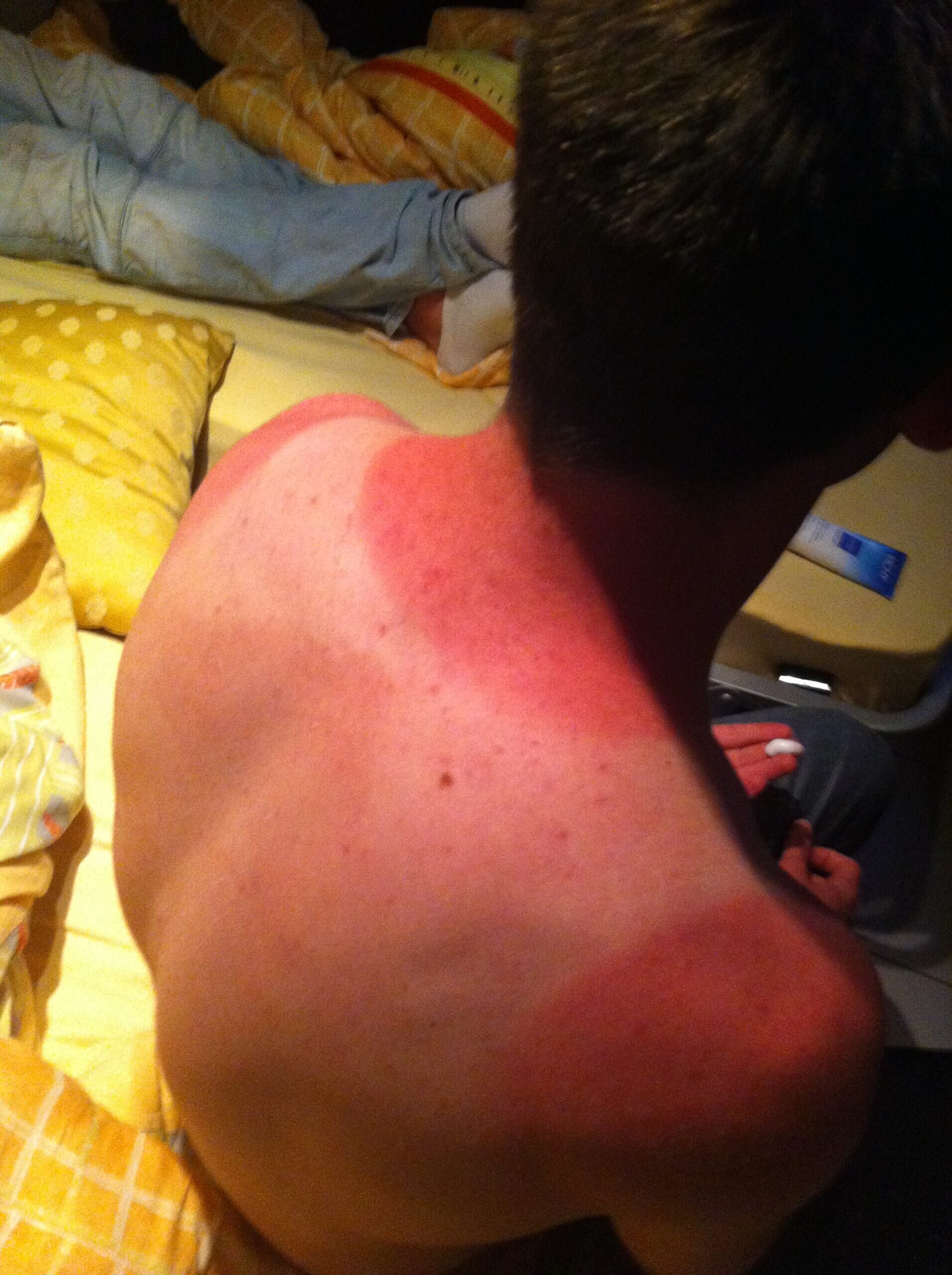Here Comes The Sun

It must really get in the way of your daily life when your flesh begins to melt on exposure to sunlight.
It must really get in the way of your daily life when your flesh begins to melt on exposure to sunlight.
Over the years, a number of diseases and disorders have been suggested to form the basis of vampire myths. The most famous of these is porphyria, wherein many people develop a strong sensitivity to sunlight but usually aren’t actually visibly burned by it. In contrast, there’s another known disease where the body seems to actually have an allergic reaction to sunlight: polymorphous light eruption, or PMLE. Like many disorders, PMLE exists on a spectrum from very mild cases, where exposure to sunlight makes people a bit itchy, to very severe cases where even five or ten minutes of exposure to sunlight can leave people with severe burns. The extreme form of the disease is extremely rare – so rare, in fact, that even the obsessional and statistics-loving medical community doesn’t have a good estimate of its prevalence. It can be sufficiently bad that people develop painful redness from an hour’s exposure to indoor fluorescent lights and genuine burns from five minutes of weak Canadian autumn sunlight. Needless to say, individuals who suffer from such an extreme form of the disorder learn to adapt their lives extensively: covering themselves up, wearing sunglasses even indoors, and often becoming functionally nocturnal. The disorder has endless impact on life even in the best situations, however, and there’s been data published in the dermatological literature demonstrating high rates of “psychological distress,” depression and suicide in the population.
The cause of PMLE is unknown. It’s generally classified as an “idiopathic” disorder, which is doctor-speak for “we don’t know why you have this.” We do know that the burn-like skin reactions seem to be associated with the body’s allergy/hypersensitivity mechanisms, and since sunlight itself theoretically shouldn’t be able to cause an allergic reaction (most allergens are complex protein molecules, whereas sunlight is composed of particles that don’t even have mass, more or less) the best theory is that light exposure catalyzes the creation of some molecule inside the body to which the body then has an autoimmune reaction. Obviously, you don’t need that complicated an explanation to use PMLE in a game, but the reason I go into it is to show why remove disease probably shouldn’t be enough to cure it. The disease is the result of a complex interplay of an unknown number of factors wherein the body’s own immune system recognizes parts of itself as foreign, and magical treatment therefore requires modifying the body in a complicated and fundamental way. Remove disease might, of course, at least heal the sunburns, unless a storyteller decides that those manifest as hit point or ability damage or something.
PMLE has endless uses in a game setting. A player character could have a mild form of it, providing interesting role-playing challenges or, in the hands of a crueler DM, progressive penalties based on time of day and local environment. An afflicted NPC could come to a party’s attention while being mistakenly burned at the stake by superstitious townsfolk. An antagonist could have PMLE as a distinguishing trait, an exploitable weakness, or even a motivation for whatever plot a storyteller contrives, from the search for a protective charm to a diabolical plan to extinguish the sun itself. Given how rare naturally-occurring PMLE should be, it’s probably much more likely to be encountered as a curse of some sort, perhaps cast to punish a narcissistic aristocrat or impede a vampire hunter.
More than four years ago, Dr. Eris Lis, M.D., began writing a series of brilliant and informative posts on RPGs through the eyes of a medical professional, and this is the one that appeared here on March 28, 2015. Lis is a physician, gamer, and author of the Skirmisher Publishing LLC OGL sourcebook Insults & Injuries, which is also available for the Pathfinder RPG system.

